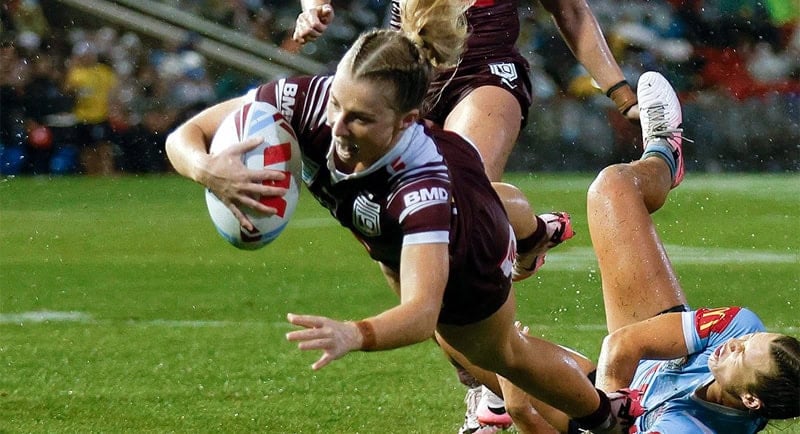After the country was swept up in Matildas’ fever last year, the appetite for women’s sport has continued to grow. In 2024, the first three-game Women’s State of Origin series broke record and viewership records, with the regular NRLW season kicking off later this month.
Matt Granger, Nine’s director of sales – sport, Olympic and Paralympic Games, told Mediaweek that the development of the women’s game has now ended, rather “it’s now a fully established competition with the strength of the teams and the athlete profile that match the the interest.”
The most recent Women’s Origin series recorded a Total TV reach of 4.3 million, with the average audience up 67%. Across Total TV, 9Now was up 160%, with an average audience of 165,000.
“You’re now seeing audiences and fans loving that product in its own right, and that is a fundamental difference,” Granger added.
The momentum won’t be slowing down any time soon, either.
“When you look ahead, you look at the under nineteen’s playing at the moment and what the game will look like in the next two to three years, the skill set level is only going to get better. That’s what’s even more exciting, it’s not going to stop, it’s just going to keep going,” said Granger.
Karrin Kuyumcian, associate strategy director at Initiative, told Mediaweek that the sustained interest in women’s sports is because of the sustained media exposure.

Matt Granger and Karrin Kuyumcian
“Women haven’t suddenly become talented in sports – they’ve been performing at an elite level for years, and there’s always been an appetite to consume the game. It’s the marketing spend and broadcast support that’s been lagging behind,” Kuyumcian said.
“Who would’ve thought that giving women in sport the same stage, broadcast opportunities and marketing efforts as the men’s game would pay off and drive audience growth?”
Kuyumcian does point out that “the playing field hasn’t been levelled yet”, and that women’s leagues will need sustained investment and exposure for growth to continue.
The investment is where brands come in. Big names backing the NRLW this year include Harvey Norman, Westpac, McDonald’s, Telstra, and SportsBet.
with Granger saying the involvement means they can “connect with an audience of fans who are highly engaged.”
“Being able to tell their stories and connect audiences with their brand, that is powerful. There is some overlap with the men’s game, but there are also new audiences available in this opportunity, which is exciting for those brands.”
Kuyumcian agrees, saying that there are two key things that happen when more household brands – both global and local – participate.
“Firstly, it signals the strength in the sport – they help the sport be seen as commercially healthy and viable, and that if these brands believe in it, other brands will too. Secondly, signalling the strength also creates strength in the sport, too. It’s a self-fulfilling prophecy – more investment equals more broadcast opportunities, more exposure, more audiences, more participation, more jobs, the list goes on.”
Looking ahead, Kuyumcian admits she hopes “ we come to a point where we stop speaking about the ‘chicken or the egg’ example when it comes to women in sports.”
“You wouldn’t expect your brand to grow without investment to support it – audiences don’t come first, investment does.”
